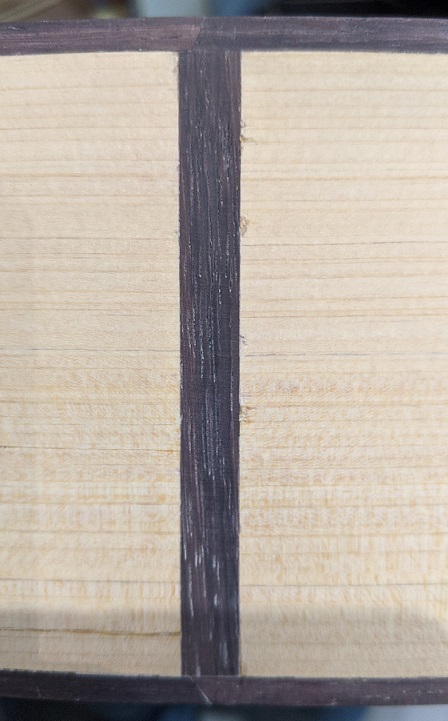|
RobF -> RE: filling cypress tear-out (Feb. 26 2021 14:02:41)
|
Those chips look pretty shallow, so filling with a sawdust paste might be the best approach, in this case. If there’s enough depth to the binding on the top and back, then there is a possibility most of the filled chips can sand out and disappear, leaving only a reminder of the two larger chips, or even none at all. Superglue won’t do it for the paste, white glue or hide glue should be used. As you found, CA will darken the dust.
You could try to graft by making tiny scoops with a beading gouge then taking corresponding scoops from a piece of cutoff that would then be glued into the scooped channels, but it’s tiny and awkward work to do when butting against the centre-strip like that. It would be more bother than it’s worth, I think, and might make matters worse, if the chips are shallow enough that they could have been sanded out to start with. I’m not crazy about that option.
Chiselling out the strip and widening the channel could be done, but will be fiddley work to fit the new strip. You could cut a new narrow channel on each side of the existing strip and inlay thin strips of the same wood. This could end up being virtually undetectable, and might be worth considering, but again is fiddley.
I’m going to vote for filling with a sawdust paste made with white glue and then hoping that the lion’s share of the chips will disappear by being sanded out. What will likely remain will be tiny and not very noticeable, at all. Just take care not to work the bindings too thin when looking at them from the top and back. There is an end block supporting the sides in that area, so a bit of thinning there is not going to do any harm. If you don’t like the results then you could always consider widening the channel, but I suspect you’ll be OK and won’t have to take that measure.
Just my thoughts...the polish isn’t going to save you, but solace can be taken in that nobody ever looks there anyways, save other makers, lol.
|
|
|
|



